MINDFUL MEDITATIVE ART
Introduction
Mindful Meditative Art sessions offer a unique and transformative
approach to both art creation and mindfulness practice. In these
sessions, participants are guided through a journey of self-discovery
and relaxation, where the act of creating art becomes a conduit for
cultivating mindfulness, presence, and inner peace. This harmonious
fusion of art and mindfulness allows individuals to explore their inner
world, reduce stress, and enhance their well-being. Whether you are a
seasoned artist or a complete beginner, these sessions are designed to
open up new avenues of self-expression and self-awareness, making
them a valuable addition to anyone's personal growth journey.
Here are the lesson content ideas for Mindful Meditative Art sessions:
1. The Basics of Mindfulness:
•
Introduce the concept of mindfulness and its benefits.
•
Learn how to bring mindful awareness to everyday life.
2. Materials and Techniques:
•
Explore various art materials and techniques.
•
Understand how different mediums can be used to express
emotions and thoughts.
3. Breathing and Grounding:
•
Practice deep breathing and grounding exercises to prepare the
mind for art creation.
•
Learn to centre yourself in the present moment.
4. Mindful Observational Drawing:
•
Focus on observation and drawing what you see in the present
moment.
•
Understand how mindful drawing can enhance attention and
perception.
5. Emotions and Colour:
•
Explore the connection between emotions and color choices.
•
Express and process emotions through the art-making process.
6. Creative Flow and Intuition:
•
Encourage spontaneous and intuitive art creation.
•
Embrace the concept of "letting go" and allowing the art to
unfold naturally.
7. Mindful Art Journaling:
•
Combine writing and art to create a mindful art journal.
•
Reflect on your feelings, thoughts, and experiences during the
creative process.
8. Art as a Meditation Tool:
•
Practice using art as a form of meditation.
•
Discover how art can be a gateway to deeper self-awareness and
inner peace.
These lesson content ideas are designed to provide a well-rounded
experience in Mindful Meditative Art, allowing participants to explore
both the artistic and mindful aspects of the practice. Each lesson may
be customized and expanded upon to create a comprehensive and
enriching journey of self-discovery through art and mindfulness.
Key Benefits of Mindful Meditative Art Practice
Mindful meditative art practice offers a wide range of benefits for
individuals of all ages and backgrounds. This unique fusion of art
creation and mindfulness techniques can have a profound impact on
one's mental, emotional, and even physical well-being. Here are some
of the key benefits of mindful meditative art practice:
1. Stress Reduction:
•
Engaging in mindful art allows individuals to shift their focus
away from daily stressors and concerns.
•
The act of creating art in a mindful manner can promote
relaxation and reduce the body's stress response, leading to
lower stress levels.
2. Enhanced Mindfulness:
•
Mindful art practice encourages the cultivation of mindfulness,
which involves being fully present in the moment without
judgment.
•
Participants develop a heightened awareness of their thoughts,
emotions, and physical sensations, fostering a deeper
connection with the here and now.
3. Improved Mental Health:
•
Mindful art provides a creative outlet for processing and
expressing complex emotions and thoughts.
•
It can help individuals manage symptoms of anxiety, depression,
and other mental health challenges by providing a means of self-
expression and emotional release.
4. Self-Expression and Self-Discovery:
•
Art is a powerful tool for self-expression, enabling individuals to
communicate their innermost feelings and ideas in a nonverbal
way.
•
Mindful art encourages self-exploration, helping individuals
uncover hidden talents and gain insights into their personal
journeys.
5. Increased Creativity:
•
By tapping into their inner creativity, participants can explore
new ideas, solutions, and perspectives.
•
Mindful art practice can inspire innovative thinking and problem-
solving in various aspects of life.
6. Enhanced Concentration:
•
Creating art in a mindful manner demands a high level of focus
and concentration on the task at hand.
•
Participants often experience improved attention span and
concentration skills as they engage in the creative process.
7. Self-Acceptance and Self-Compassion:
•
Mindful meditative art teaches individuals to accept their art and
themselves without self-criticism or judgment.
•
This can extend to fostering self-compassion and a more
forgiving attitude toward one's imperfections and mistakes.
8. Relaxation and Well-Being:
•
Engaging in mindful art can lead to a state of relaxation and a
sense of well-being.
•
The release of endorphins during the creative process can
contribute to a feeling of happiness and contentment.
9. Connection to Others:
•
Participating in mindful art sessions with others can create a
sense of community and shared experience.
•
It fosters social connection, open communication, and the
opportunity to learn from one another.
10. Coping Mechanism:
•
Mindful art can serve as a valuable coping mechanism during
challenging times, offering a healthy and constructive way to
manage stress, grief, and adversity.
Incorporating mindful meditative art into one's routine can be a
powerful and accessible means of promoting overall well-being.
Whether used as a regular practice or an occasional form of self-care,
mindful art offers individuals a therapeutic and enriching outlet for
self-discovery, relaxation, and personal growth.
> To page 2
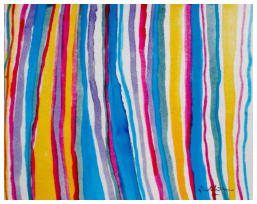
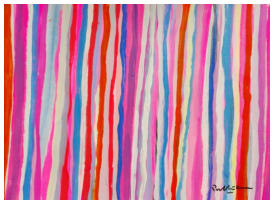
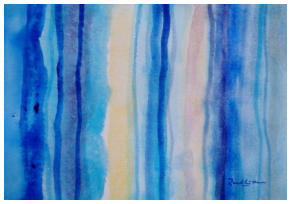

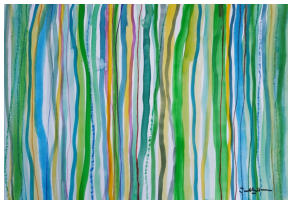
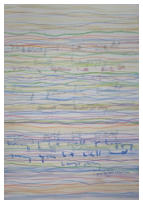
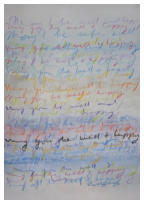
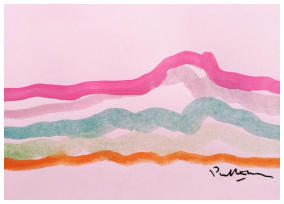
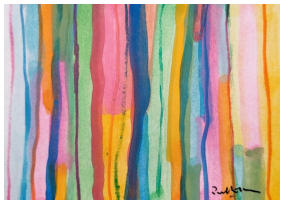
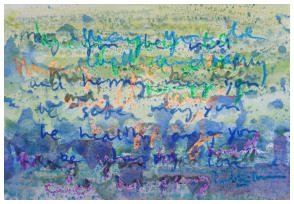
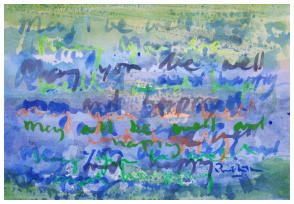
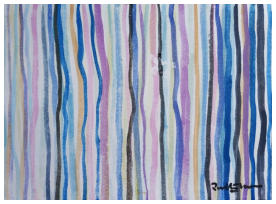


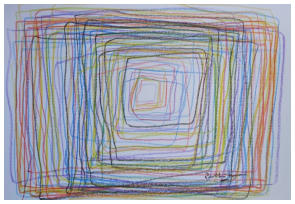
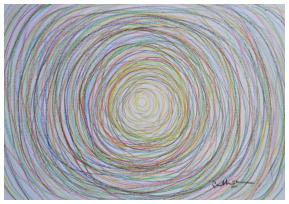
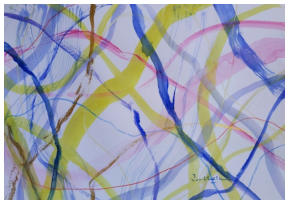
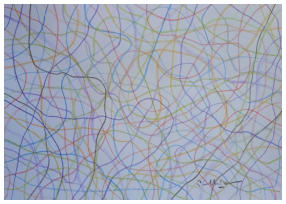
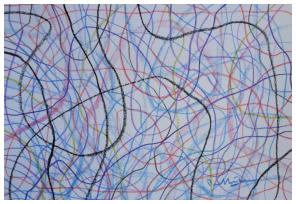
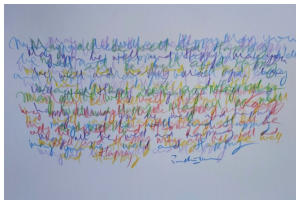
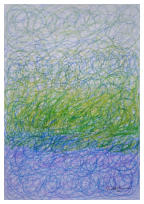
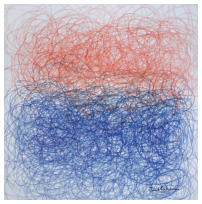
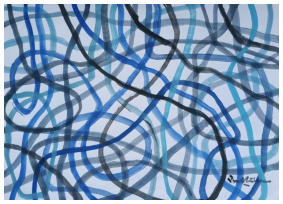

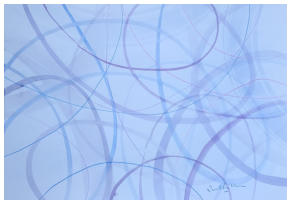
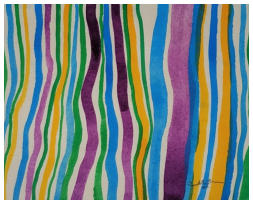
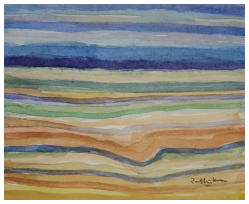
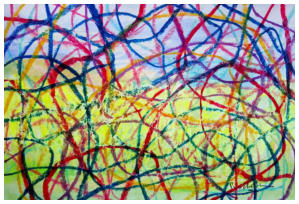
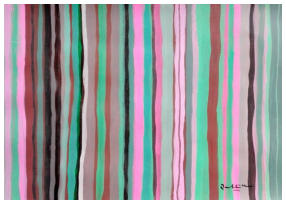

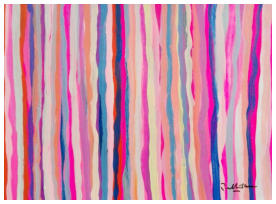

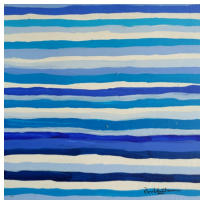
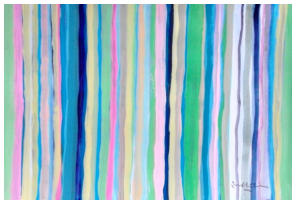
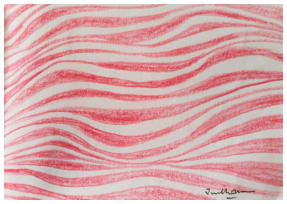


MINDFUL MEDITATIVE ART
Introduction
Mindful Meditative Art sessions offer a unique
and transformative approach to both art
creation and mindfulness practice. In these
sessions, participants are guided through a
journey of self-discovery and relaxation, where
the act of creating art becomes a conduit for
cultivating mindfulness, presence, and inner
peace. This harmonious fusion of art and
mindfulness allows individuals to explore their
inner world, reduce stress, and enhance their
well-being. Whether you are a seasoned artist
or a complete beginner, these sessions are
designed to open up new avenues of self-
expression and self-awareness, making them a
valuable addition to anyone's personal growth
journey.
Here are the lesson content ideas for Mindful
Meditative Art sessions:
1. The Basics of Mindfulness:
•
Introduce the concept of mindfulness
and its benefits.
•
Learn how to bring mindful awareness
to everyday life.
2. Materials and Techniques:
•
Explore various art materials and
techniques.
•
Understand how different mediums
can be used to express emotions and
thoughts.
3. Breathing and Grounding:
•
Practice deep breathing and
grounding exercises to prepare the
mind for art creation.
•
Learn to centre yourself in the present
moment.
4. Mindful Observational Drawing:
•
Focus on observation and drawing
what you see in the present moment.
•
Understand how mindful drawing can
enhance attention and perception.
5. Emotions and Colour:
•
Explore the connection between
emotions and color choices.
•
Express and process emotions
through the art-making process.
6. Creative Flow and Intuition:
•
Encourage spontaneous and intuitive
art creation.
•
Embrace the concept of "letting go"
and allowing the art to unfold
naturally.
7. Mindful Art Journaling:
•
Combine writing and art to create a
mindful art journal.
•
Reflect on your feelings, thoughts, and
experiences during the creative
process.
8. Art as a Meditation Tool:
•
Practice using art as a form of
meditation.
•
Discover how art can be a gateway to
deeper self-awareness and inner
peace.
These lesson content ideas are designed to
provide a well-rounded experience in Mindful
Meditative Art, allowing participants to explore
both the artistic and mindful aspects of the
practice. Each lesson may be customized and
expanded upon to create a comprehensive and
enriching journey of self-discovery through art
and mindfulness.
Key Benefits of Mindful Meditative Art
Practice
Mindful meditative art practice offers a wide
range of benefits for individuals of all ages and
backgrounds. This unique fusion of art creation
and mindfulness techniques can have a
profound impact on one's mental, emotional,
and even physical well-being. Here are some of
the key benefits of mindful meditative art
practice:
1. Stress Reduction:
•
Engaging in mindful art allows
individuals to shift their focus away
from daily stressors and concerns.
•
The act of creating art in a mindful
manner can promote relaxation and
reduce the body's stress response,
leading to lower stress levels.
2. Enhanced Mindfulness:
•
Mindful art practice encourages the
cultivation of mindfulness, which
involves being fully present in the
moment without judgment.
•
Participants develop a heightened
awareness of their thoughts,
emotions, and physical sensations,
fostering a deeper connection with the
here and now.
3. Improved Mental Health:
•
Mindful art provides a creative outlet
for processing and expressing
complex emotions and thoughts.
•
It can help individuals manage
symptoms of anxiety, depression, and
other mental health challenges by
providing a means of self-expression
and emotional release.
4. Self-Expression and Self-Discovery:
•
Art is a powerful tool for self-
expression, enabling individuals to
communicate their innermost feelings
and ideas in a nonverbal way.
•
Mindful art encourages self-
exploration, helping individuals
uncover hidden talents and gain
insights into their personal journeys.
5. Increased Creativity:
•
By tapping into their inner creativity,
participants can explore new ideas,
solutions, and perspectives.
•
Mindful art practice can inspire
innovative thinking and problem-
solving in various aspects of life.
6. Enhanced Concentration:
•
Creating art in a mindful manner
demands a high level of focus and
concentration on the task at hand.
•
Participants often experience
improved attention span and
concentration skills as they engage in
the creative process.
7. Self-Acceptance and Self-Compassion:
•
Mindful meditative art teaches
individuals to accept their art and
themselves without self-criticism or
judgment.
•
This can extend to fostering self-
compassion and a more forgiving
attitude toward one's imperfections
and mistakes.
8. Relaxation and Well-Being:
•
Engaging in mindful art can lead to a
state of relaxation and a sense of well-
being.
•
The release of endorphins during the
creative process can contribute to a
feeling of happiness and contentment.
9. Connection to Others:
•
Participating in mindful art sessions
with others can create a sense of
community and shared experience.
•
It fosters social connection, open
communication, and the opportunity
to learn from one another.
10. Coping Mechanism:
•
Mindful art can serve as a valuable
coping mechanism during challenging
times, offering a healthy and
constructive way to manage stress,
grief, and adversity.
Incorporating mindful meditative art into one's
routine can be a powerful and accessible
means of promoting overall well-being.
Whether used as a regular practice or an
occasional form of self-care, mindful art offers
individuals a therapeutic and enriching outlet
for self-discovery, relaxation, and personal
growth.
> To page 2


































































































































